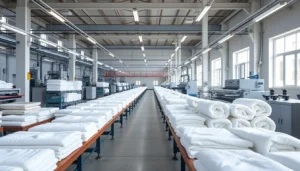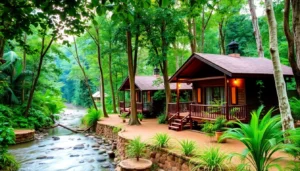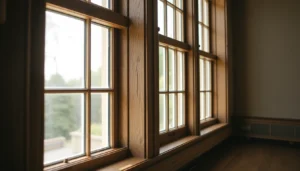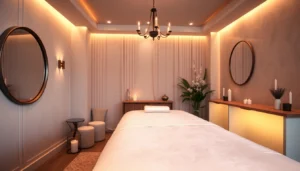Introduction to Bespoke Sash Windows: Customizing Classic Charm
The timeless allure of sash windows has long been associated with period architecture and historic homes across the UK. Their iconic design—characterized by vertically sliding panels and elegant proportions—adds a distinctive charm that seamlessly blends aesthetic appeal with practical functionality. In recent years, a growing demand for customized solutions has propelled bespoke sash windows into the spotlight, enabling homeowners and property developers to preserve traditional aesthetics while integrating modern benefits.
Bespoke sash windows offer not only a tailored fit but also a profound opportunity to enhance the character and value of a property.
Understanding their historical significance provides insight into why these windows continue to be a preferred choice for restoration projects and new builds aiming for a classic yet contemporary look. This article explores the myriad aspects of bespoke sash windows—from design options to installation techniques—empowering you to make informed decisions that align with your home’s unique personality and your functional requirements.
What Are Bespoke Sash Windows and Their Historical Significance
Sash windows have been an integral feature of British architecture since the 17th century, originating from the transient window designs that allowed for ventilation while maintaining security and style. These windows rose in popularity during the Georgian and Victorian eras, symbolizing stability, elegance, and craftsmanship. The traditional sash window comprises two vertically sliding sashes, often with multiple panes, which slide past each other within a wooden frame.
The historical significance of sash windows is deeply ingrained in the UK’s architectural heritage. They are emblematic of period properties, especially those from the Regency, Victorian, and Edwardian periods, and have become a hallmark for conservation and restoration projects. The ability to create bespoke versions allows preservationists and homeowners to maintain authenticity while meeting modern standards—such as improved insulation and security.
Customization plays a vital role, enabling bespoke sash windows to reflect the original design or introduce contemporary elements that elevate their aesthetic and functional purpose. Modern innovations also facilitate better energy efficiency, noise reduction, and ease of maintenance, all while respecting the historic integrity.
Benefits of Choosing Made-to-Measure Windows
Opting for bespoke sash windows tailored to your property’s exact specifications confers several advantages that generic solutions simply cannot match. Here’s a detailed look at the key benefits:
- Perfect Fit and Seamless Integration: Custom-made windows are manufactured to the precise measurements of your openings, eliminating gaps, drafts, and the need for improvisations during installation. This ensures optimal performance, aesthetics, and energy efficiency.
- Enhanced Property Value: Tailored sash windows significantly enhance curb appeal and market value. Their authenticity and craftsmanship often become focal points, attracting discerning buyers or tenants.
- Historical Accuracy and Preservation: For heritage homes, bespoke solutions allow for detailed replication or sympathetic modernization that preserves architectural integrity while upgrading performance.
- Personalization Options: You can select from various materials, finishes, hardware, and glazing options, ensuring that every aspect of your windows aligns with your aesthetic and practical preferences.
- Future-proofing: Made-to-measure windows are designed to accommodate future upgrades, such as triple glazing or advanced security features, without compromising the original style.
These benefits collectively contribute to a solution that marries tradition with innovation—creating windows that are not only beautiful but also efficient, durable, and valuable assets to your property.
Modern Innovations Combining Tradition and Efficiency
While the charm of traditional sash windows is rooted in their classic design, contemporary innovations have elevated their functionality and sustainability. Today’s bespoke sash windows integrate advanced materials and technological improvements to meet modern standards without sacrificing their historic appeal.
High-Performance Double Glazing
One of the most significant advancements is the incorporation of double glazing within traditional frames. Modern double-glazed panels offer enhanced insulation, reducing heat loss and draughts. This ensures that historic properties benefit from increased energy efficiency while maintaining their authentic appearance. These glazed units are custom-fitted to match the original designs, often with slim-profile frames to preserve the classic aesthetics.
Secure Hardware and Locking Mechanisms
Security is paramount in contemporary settings. Innovative bespoke sash windows feature multi-point locking systems, robust handles, and reinforced frames to prevent intrusion, satisfying both homeowners’ peace of mind and legal security standards.
Low-Maintenance Materials and Finishes
Traditionally crafted from timber, sash windows can now be produced with uPVC or aluminium frames that offer long-lasting performance with minimal upkeep. These materials are resistant to rot, warping, and weathering, while still allowing for traditional finishes and colours to suit historic styles.
Sustainable Production Practices
Sustainability is also a key focus. Many bespoke sash window manufacturers source timber from certified forests and adopt eco-friendly manufacturing processes. This commitment ensures that your windows contribute to environmental conservation while delivering exceptional quality.
These innovations exemplify how tradition and efficiency can coexist harmoniously, delivering bespoke sash windows that are as functional as they are beautiful—a true reflection of craftsmanship aligned with modern demands.
Design Options and Material Choices for Your Bespoke Sash Windows
The customization possibilities for bespoke sash windows are extensive, enabling homeowners to craft windows that perfectly complement both period and contemporary properties. Understanding the available materials, finishes, hardware, and glazing options is essential to making an informed choice.
Traditional Timber vs. uPVC and Aluminum Frames
Timber: The classic choice, timber frames provide authentic appearance, excellent insulation, and can be custom carved and stained to match existing features. However, they require regular maintenance, such as repainting or sealing, to prevent rot and weather damage.
uPVC: Modern uPVC frames are lightweight, low-maintenance, and highly energy-efficient. They are available in various colours and finishes, simulating the appearance of timber while offering added durability and security. These are ideal for homeowners seeking a balance of aesthetics and practicality.
Aluminium: Aluminium frames are renowned for their strength, slim profiles, and minimal upkeep. They also support larger panes of glass, allowing for increased natural light and panoramic views, especially suitable for contemporary adaptations of sash designs.
Custom Finishes, Colors, and Hardware Details
Personalization extends beyond materials. You can choose from a wide palette of colours, including heritage shades or modern hues, often applied via environmentally friendly powder coating. Hardware is equally customizable—antique brass, chrome, polished nickel, or wrought iron—each adding a distinctive touch that accentuates your windows’ character.
Decorative features such as astragal bars, Georgian glazing, or leaded designs can be incorporated during manufacturing to replicate historic details or create unique aesthetic statements.
Incorporating Double Glazing for Energy Efficiency
Integrating double glazing into bespoke sash windows enhances thermal performance, sound insulation, and security. Custom glazing options include clear, tinted, low-emissivity (low-e), and stained glass, providing flexibility to match style and energy goals. Modern glazing units are designed to preserve the slim aesthetic of traditional sash windows while delivering maximum efficiency.
The choice of materials and glazing combinations should align with your home’s architectural style, climate considerations, and personal preferences. Consulting with specialists ensures optimal configurations that meet both form and function.
Step-by-Step Guide to Ordering Bespoke Sash Windows
Assessing Your Home’s Style and Requirements
The first step involves evaluating your property’s architectural character—whether it’s a Georgian terrace, Victorian cottage, or modern rebuild—and determining the style, size, and functionality of windows that will harmonize with the existing structure. Photography, sketches, and detailed measurements are essential for initial consultations.
Collaborating with Window Specialists for Ideal Designs
Engaging experienced manufacturers or installers ensures your vision translates into a practical design. Professionals can advise on material selection, hardware options, glazing types, and security features, ensuring compliance with building regulations and conservation guidelines.
Measuring, Quoting, and Production Process
Accurate measurements are critical for bespoke windows; reputable suppliers typically conduct on-site assessments. After finalizing designs, you will receive detailed quotations, including costs, lead times, and installation schedules. The production phase involves crafting your windows with precision engineering, ensuring quality control at every stage. This process can take several weeks, depending on complexity.
Clear communication throughout, along with detailed specifications, guarantees the final product matches expectations and adheres to your property’s character.
Installation, Maintenance, and Longevity of Bespoke Sash Windows
Professional Fitting and Quality Assurance
Proper installation is paramount to achieving optimal performance and longevity. Certified carpenters and fitters follow precise procedures to ensure secure fixing, airtight seals, and smooth operation. Thorough assessments before and after fitting help address potential issues and ensure quality standards are met.
Care Tips to Preserve Appearance and Functionality
Regular maintenance extends the lifespan of bespoke sash windows. For timber frames, repainting or sealing every few years prevents rot and weather damage. Cleaning hardware with appropriate lubricants maintains smooth sliding and locking mechanisms. For uPVC or aluminum, periodic cleaning with gentle agents keeps finishes looking fresh.
Addressing Common Issues and Long-Term Performance
Common challenges include window sticking, drafts, or hardware failure. Addressing these promptly with professional repairs, seal adjustments, or hardware replacements ensures continued operation. Modern sash windows feature improved weatherproofing and hardware robust enough to resist daily wear, often surpassing traditional longevity expectations.
Enhancing Property Value and Aesthetic Appeal with Bespoke Sash Windows
Market Value Impact and Historical Preservation
Installing bespoke sash windows can significantly elevate a property’s value, especially in conservation areas or historical districts where authenticity is prized. They contribute to the preservation of architectural heritage, adding character and authenticity that appeals to buyers seeking period features.
Personalized Style and Curb Appeal Benefits
Customization allows homeowners to reflect personal style, whether through color, hardware, or decorative glazing. Well-designed sash windows enhance curb appeal, increase aesthetic harmony, and create inviting street-frontages or countryside vistas.
Case Studies and Customer Testimonials
Many clients report noticeable improvements in their property’s ambiance and energy efficiency after upgrading to bespoke sash windows. For example, restoring a Victorian townhouse with custom timber sash windows not only restored its original charm but also resulted in lower heating bills and increased market valuation.




















